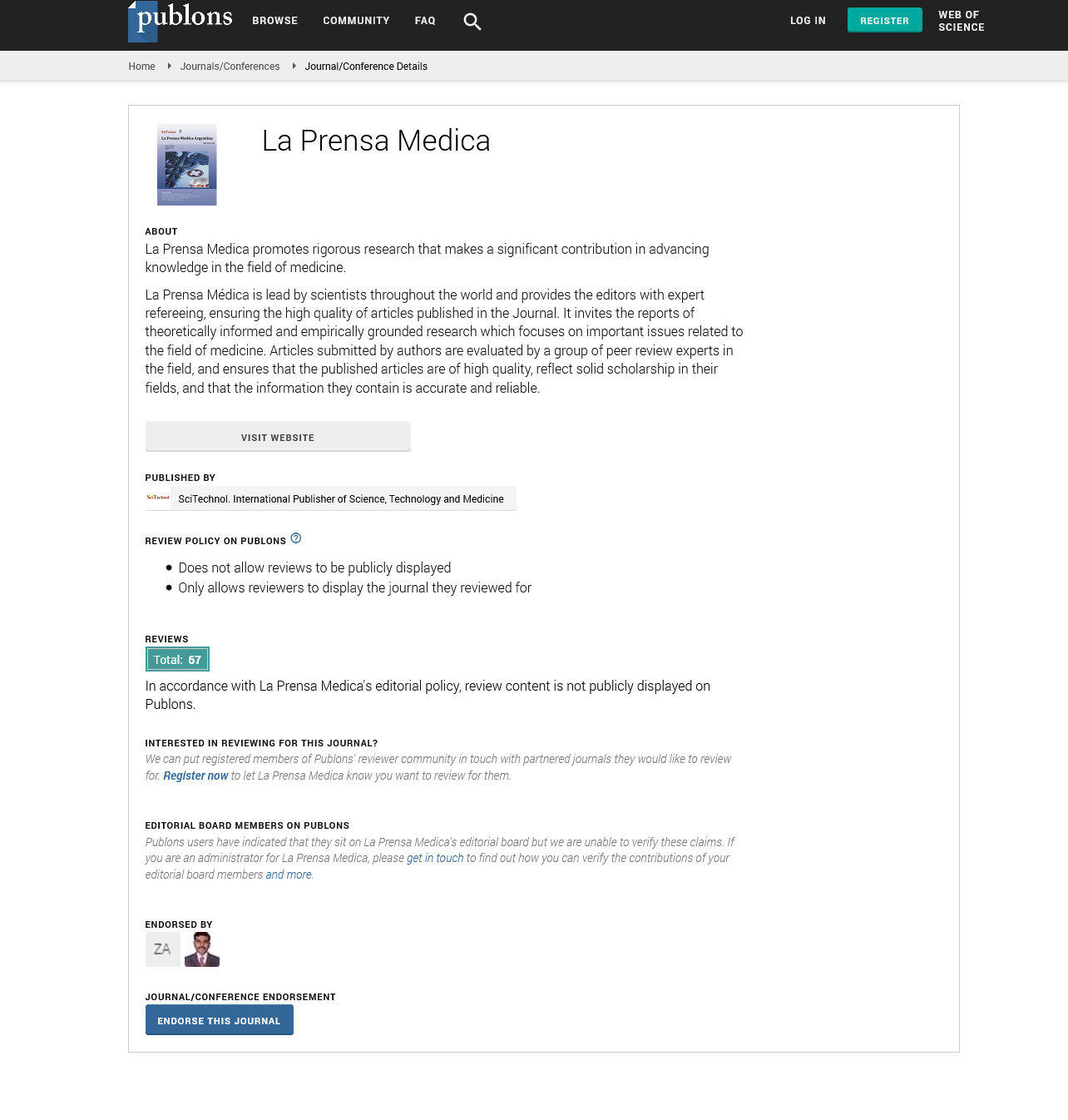Perspective, La Prensa Medica Vol: 109 Issue: 4
Exploring the Relationship between Emergency and Internal Medicine: A Framework for Patient Care
Alex Dioter*
1Department of Internal Medicine, Beth Israel Medical Centre, New York, United States of America
*Corresponding Author: Alex Dioter,
Department of Internal Medicine, Beth Israel
Medical Centre, New York, United States of America
E-mail: dioalex66@chpnet.org
Received date: 30 October, 2023, Manuscript No. LPMA-23-111733;
Editor assigned date: 01 November, 2023, PreQC No. LPMA-23-111733 (PQ);
Reviewed date: 16 November, 2023, QC No. LPMA-23-111733;
Revised date: 23 November, 2023, Manuscript No. LPMA-23-111733 (R);
Published date: 30 November, 2023, DOI: 10.4172/2324-8955.1000678
Citation: Dioter A (2023) Exploring the Relationship between Emergency and Internal Medicine: A Framework for Patient Care. La Prensa Medica 109:4.
Abstract
In the dynamic landscape of healthcare, the realms of emergency medicine and internal medicine intersect to form a vital bridge that addresses a wide spectrum of patient needs. This symbiotic relationship ensures that patients receive prompt attention during acute episodes while also benefiting from comprehensive, long-term care for chronic conditions.
Description
In the dynamic landscape of healthcare, the realms of emergency medicine and internal medicine intersect to form a vital bridge that addresses a wide spectrum of patient needs. This symbiotic relationship ensures that patients receive prompt attention during acute episodes while also benefiting from comprehensive, long-term care for chronic conditions. As we delve into the intricate interplay between these two specialties, we uncover a healthcare framework that strives to deliver holistic and efficient medical services.
The acute-longitudinal continuum
Emergency medicine specializes in immediate intervention during critical situations, while internal medicine focuses on the diagnosis, management, and prevention of chronic illnesses. The intersection of these fields is where patients' acute and long-term healthcare needs converge, emphasizing a holistic approach that recognizes the interconnectedness of health.
Emergency department triage and seamless continuity of care
The emergency department serves as the frontline for assessing and addressing acute medical concerns. Here, emergency medicine physicians triage patients, diagnose emergent conditions, and initiate lifesaving interventions. However, the collaboration doesn't end at the ER doors. Upon stabilization, patients often transition to internal medicine for comprehensive follow-up, ensuring that underlying issues are addressed and chronic conditions are managed effectively. The seamless transition from emergency to internal medicine is essential in preventing fragmented care. Communication between emergency physicians and internists ensures that medical records, test results, and treatment plans are smoothly transferred. This collaborative handover guarantees that patients' medical histories are respected and that treatments align with their overall health goals.
Chronic conditions in the emergency setting
Many patients seeking emergency care have chronic conditions that can exacerbate without proper management. The collaboration between emergency and internal medicine becomes crucial in recognizing these underlying factors and providing guidance on continued care. Astute emergency physicians are skilled at identifying red flags and referring patients to appropriate specialists for ongoing treatment.
The geriatric challenge
Geriatric patients often present with a combination of acute and chronic conditions. The intersection of emergency and internal medicine takes on added significance in this demographic. The delicate balance of managing acute issues while considering the complexities of chronic diseases requires a coordinated approach that is tailored to the unique needs of older adults.
Emerging technologies and telemedicine
Advancements in technology have expanded the collaboration between emergency and internal medicine. Telemedicine platforms enable rapid consultation between specialists, allowing emergency physicians to seek expert advice for complex cases. This real-time interaction bridges geographical distances and enhances the quality of care.
Complex decision-making
In cases of uncertainty or complex presentations, the partnership between these specialties helps guide decision-making. Consultations between emergency and internal medicine physicians ensure that a range of perspectives is considered, leading to informed choices that prioritize patients' well-being.
Conclusion
The collaboration between emergency and internal medicine contributes to the optimal utilization of healthcare resources. Efficient triage in the emergency department ensures that patients with acute needs receive immediate attention, allowing internal medicine specialists to focus on those requiring ongoing management. Ultimately, the partnership between emergency and internal medicine exemplifies the cohesive and patient-centered approach that defines modern healthcare. By recognizing the interdependence of acute and chronic medical needs, these specialties create a healthcare continuum that strives to deliver not only timely interventions but also sustained well-being for patients across diverse medical scenarios.
 Spanish
Spanish  Chinese
Chinese  Russian
Russian  German
German  French
French  Japanese
Japanese  Portuguese
Portuguese  Hindi
Hindi 

